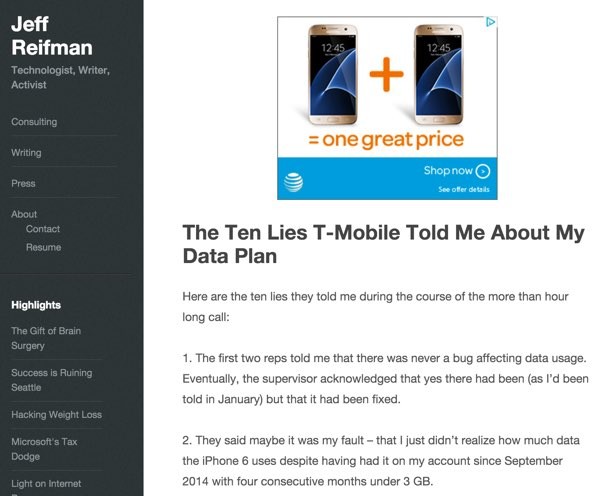
Optimizing Your Google Advertising Revenue
This is the eighth tutorial in our series about Google DoubleClick for Publishers. DFP is a service that can seem incredibly complicated to the uninitiated, so this series aims to simplify it and educate you on a number of the most important scenarios.
In our sixth episode, Using House Ads, I walked through creating your own house ads and setting prices for them to force AdSense to compete with them. In this tutorial, I'll dive a bit deeper into configuring your site for higher revenue. DFP has a handful of approaches and settings for this, and we'll explore them in more detail.
You can see one of the optimal outcomes above in the featured image. It shows AT&T advertising on a popular story I wrote about problems with T-Mobile customer service.
If you're new to this series, please review our earlier episodes before continuing: Introduction to Google DFP Small Business, Beginning Ad Integration with Your Website, and Placements.
I do try to participate in the discussions below. If you have a question or topic suggestion for a future episode, please post a comment below or contact me on Twitter @reifman.
Approaches to Optimization
Today, we'll explore several key approaches to optimizing our revenue:
- Selecting Google's top performing ad sizes for highest revenue
- Reconfiguring updated ad unit inventory on our site
- Placing orders for our internal house ads to improve AdSense placements
In a future episode, we will walk through another approach, integrating alternative ad networks to compete with AdSense to drive up your revenue.
Let's begin looking at our primary approaches.
Selecting Google's Top Performing Ad Sizes
Google's most recommended ad sizes below show which ad sizes are performing the best. As you can see, the ad size affects both advertiser interest and click-through rate. Both of these will drive higher revenue. Larger ads are more disruptive to the user experience but have higher inventory because advertisers like them. The size of larger ads gives advertisers the best chance to generate click-through, leading to more clicks and higher revenue.
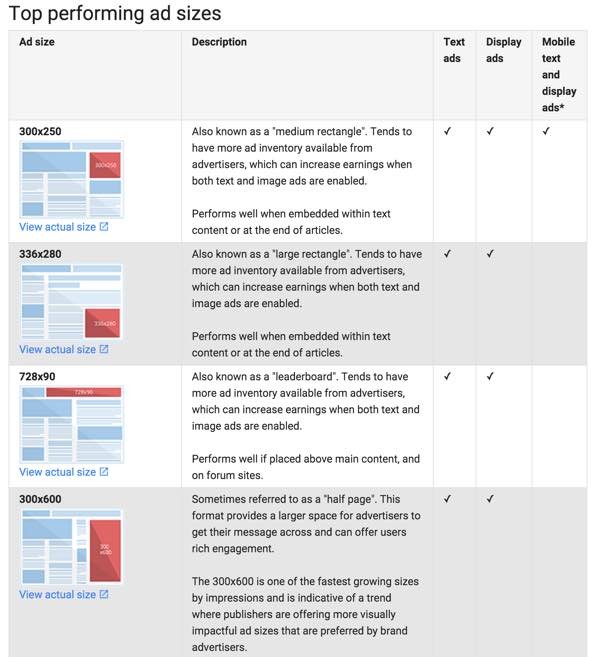
Certain ad sizes perform better on mobile sites, such as the 300 x 250 and the 320 x 100 below. However, the 320 x 100 size below won't show up on desktop layouts, risking empty, wasted advertising impressions.

Initially, I focused on the 300 x 250, 320 x 100 and 320 x 50 sizes. However, there are a lot of challenges integrating multiple ad sizes across mobile and desktop platforms. This ultimately didn't work:
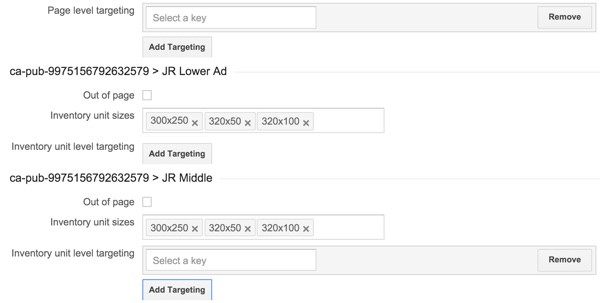
It's not trivial to integrate dynamic ad size selection based on the responsiveness of a WordPress theme. There are different ways to approach the problem, but on my current theme and method of generating DFP ad code, it would require more server programming and JavaScript than I can perform for this tutorial.
I found that using three sizes, Google would not adjust based on the reader's viewport size and would often leave ads blank on the desktop.
Ultimately, I chose to exclusively use 300 x 250, which works on all size platforms:

Review and Configure Updated Ad Units
In the last episode, Using House Ads, we built ad units into the sidebar for Publishing with WordPress. Today, I want to design ad units for the new theme at my site, jeffreifman.com. I've written two upcoming tutorials here on optimizing my Google Page Speed for this site. In the second episode, I switched themes to reach a page speed of 100. However, in doing so, I've had to minimize my approach to advertising on the site.
Ultimately, I chose Array Theme's Medium for its responsiveness and speed. But I wanted the menu and sidebars to remain lightweight, with very small static house ads. This raised the question of how to place ad units in the primary content.
While they're simple to place in the code, I'm not a big fan of banner ads at the top of my content. They are disruptive to readers. I chose to place a lower ad unit just above the comments. This would also be delivered by the theme on every page.
Here's me creating an ad unit in Google DFP—review Using House Ads if you need a step-by-step guide:
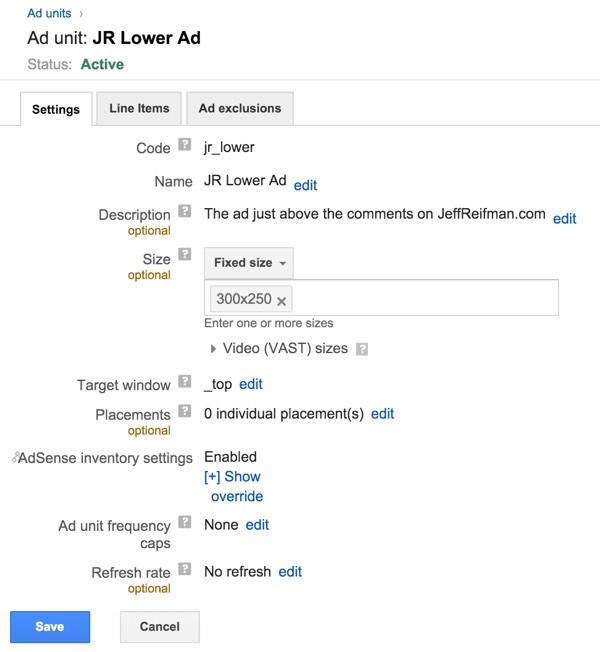
I won't spend time on it here, but you can reduce the repetitiveness of the appearance of ads in these spaces by adjusting the Frequency Caps and the Refresh Rate. This may be more optimal for your site, drawing in a higher volume of unique ads and advertisers.
After creating the lower ad unit, I chose to create an ad unit for the top level content and mid-level content which I would need to manually place on my most trafficked pages. This may not appeal to publishers of very large sites with thousands of pages; larger publishers may want to create ad units and auto-place them in several areas of their content via their theme. (Of course they could do this by coding it into their theme or CMS.)
This is one of the reasons sidebars are popular—they are easy to code.
My ad units are now named:
- jr_top
- jr_medium
- jr_bottom
They all render as 300 x 250 size ad units. And that's my new advertising inventory with my new theme. Browse the site to see it in action: Jeff Reifman.
Placing Orders for Our Internal House Ads
Next, I'll walk you through placing orders for our own house ads. In this case, by house ads I mean my affiliate ads that generate some revenue or private sales. We'll also review some of the order's line item settings that can improve performance.
Here's a graphic from the Google DFP Ad Selection White Paper that gives an overview of how DFP chooses which ads to display:
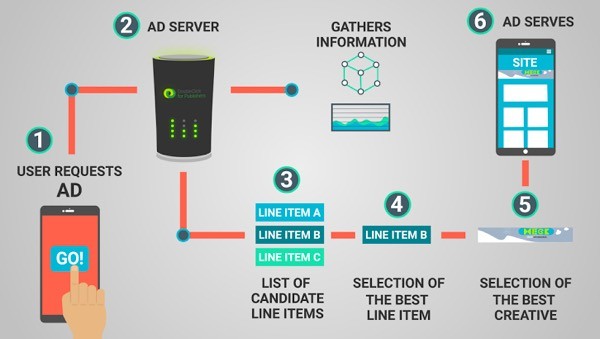
Optimizing our orders and line item settings is important to optimize our revenue.
Again, if you want to review how to create orders and add line items, I walk through it in the earlier Using House Ads.
To begin, I added a line item to the previously created order, House Ads 2016, which I called JR Ads:

Line Item Types and Their Delivery Priorities
Let's take a look at the line item settings:
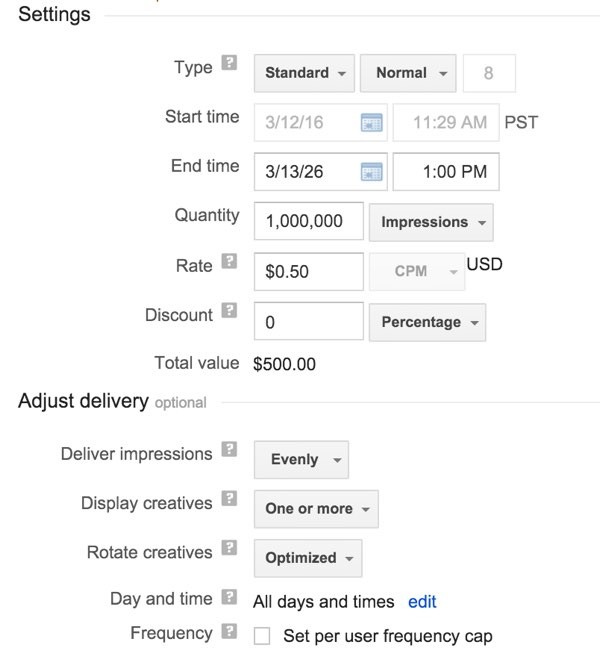
Notice that I set the rate to $.50 cents CPM to set a competitive floor against overly cheap AdSense ads. I'd rather show my affiliate ads instead of basement DFP ads. But let's talk about the Line Item Types in more detail.
You can apply any of the following delivery priorities to line items (via Google):
- Sponsorship: Sponsorship line items have the highest delivery priority and are typically revenue-generating. Sponsorship line items are most commonly used for time-based campaigns, such as a sponsorship or fixed placement.
- Standard (default): Standard line items are most commonly used for directly-sold campaigns that have an agreed-upon impression quantity with an advertiser.
- Network: Line item type that is commonly used to traffic your ad networks. Can specify a percentage of your remaining impressions to fulfill.
- Bulk: Line item type used to fill your site's unsold inventory by specifying a fixed quantity of impressions.
- Price priority: Line item type used to fill your site's unsold inventory with the highest paying line item available.
- House: House line items are typically used for ads that promote products and services chosen by you. House ads are commonly non-revenue generating and always have the lowest delivery priority.
Depending on how you want to deliver your house inventory, there are a number of options you can use to do so in different ways. I'm using price competitiveness with Standard but you can also do this with Price priority. Or, you can do it by priority with Sponsorship or by percentage with Network or Bulk. And, of course, if you have no revenue house ads, you can use the House program and they will only appear when there is no paid ad.
Here's a visual presentation of the priority of delivery for each Line Item Type:
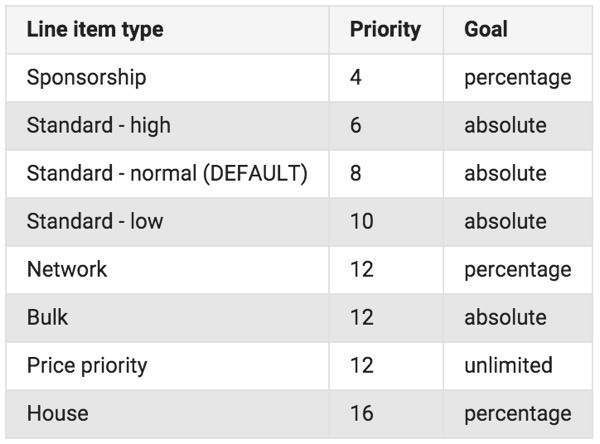
This helps you understand the overall priority of ads that you place into orders and specific line item types.
Generating Tags for Your Website
While I walked through generating and placing DFP tags on your site in Using House Ads, I want to highlight a few more details in this process.
When you generate tags for these line items, you may notice the Page Level Targeting and Inventory Unit Level Targeting:
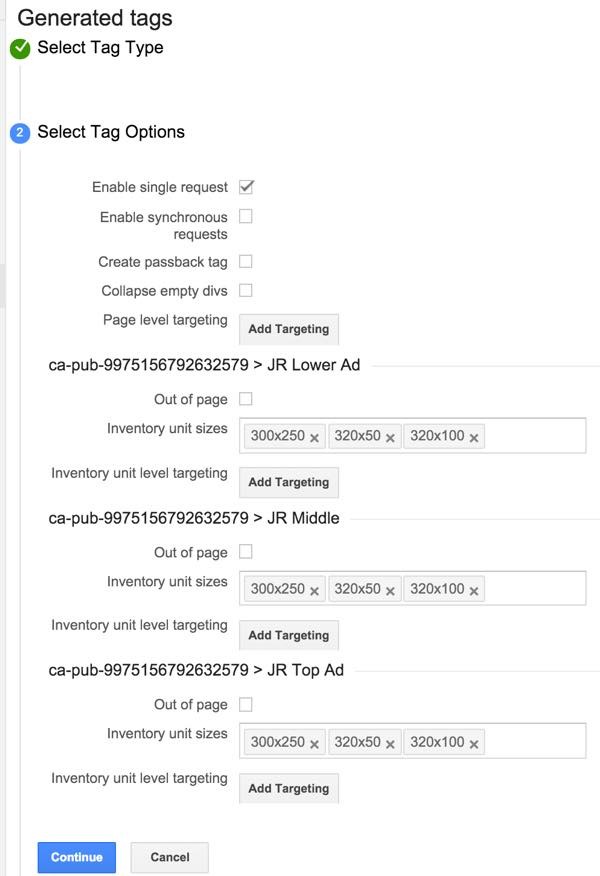
While I won't dive into detail on DFP targeting, you can learn more about this to use keywords which better connect your advertisers to your content, potentially increasing demand and revenue. For example, you can use a keyword for pages and advertisers that relate to "snowboarding" or "healthcare."
Placing the DFP Ad Unit Code
As in Using House Ads, we added the header tags to my theme header code. For JeffReifman.com, I use GitHub to deploy updates to the theme.
For the jr-lower ad, I placed that in theme code for the area of content pages above comments, like this:
</div><!-- post content -->
<?php if( is_page() ) {} else { ?>
<ul class="meta">
<li ><span><?php _e( 'Category: ', 'medium' ); ?></span><span><?php the_category( ', ' ); ?></span><br /></li>
<?php if (!wp_is_mobile()) { ?>
<!-- not mobile -->
<?php $posttags = get_the_tags(); if ( $posttags ) { ?>
<li><span><?php _e( 'Tag: ', 'medium' ); ?></span> <?php the_tags( '', ', ', '' ); ?></li>
<?php } ?>
<?php } ?> <!-- end not mobile -->
<?php if( is_single() ) { ?>
<li><?php previous_post_link( '%link', __( '<strong>Previous Post: </strong>', 'medium' ) . '%title' ); ?></li>
<li><?php next_post_link( '%link', __( '<strong>Next Post: </strong>', 'medium' ) . '%title' ); ?></li>
<?php } ?>
</ul>
<?php } ?>
<center>
<!-- /1056613/jr_lower -->
<div id='div-gpt-ad-1457895390973-0' style='height:250px; width:300px;'>
<script type='text/javascript'>
googletag.cmd.push(function() { googletag.display('div-gpt-ad-1457895390973-0'); });
</script>
</div>
</center>
</div><!-- box -->
However, for the jr-top and jr-middle ads, I'm placing these manually repeatedly through popular content. Since the ad code from DFP might change over time, I'm using the Shortcoder plugin which I described a while ago in The Benefits of Using the Free Shortcoder Plugin.
Here I am creating shortcodes like dfp-top and dfp-middle in the Shortcode editor. Notice that I'm using a parameter for how the ads will float inside my content called %%side%%:
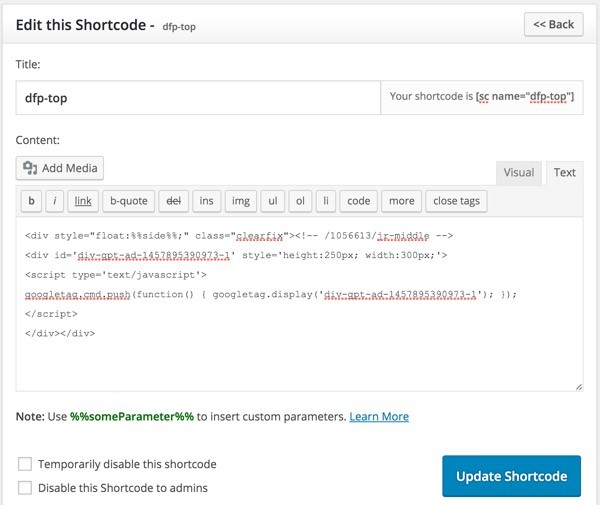
Then, when I insert the ads into my content, I can reuse shortcodes while positioning them left or right or none; in the case of none, I might center the ad. Here's an example placing the ad to the left:
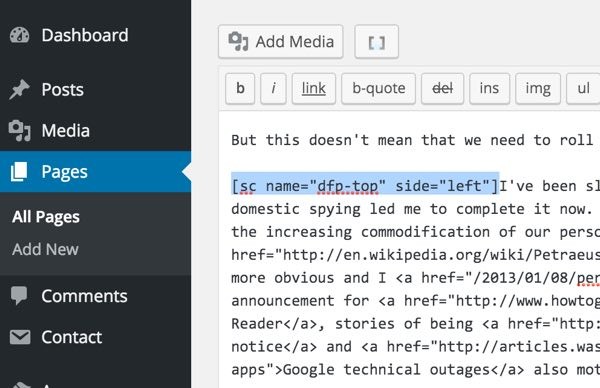
I can place the shortcodes throughout my site content and change them easily from the Shortcode editor as needed. Want to see the results? Here's a poignant "See the difference advertising on Google can make" ad on one of my popular JavaScript posts:
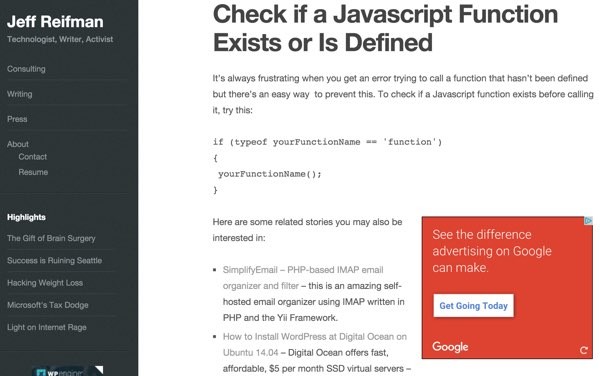
What's Next?
I hope this has helped you take a deeper look at how to optimize revenue with your site advertising.
As this series continues, we'd love to hear more of your feedback about DFP topics you'd like us to explore. Please feel free to post your questions and comments below. You can also contact me on Twitter @reifman. To see other tutorials I've written, browse my Envato Tuts+ instructor page.


Comments